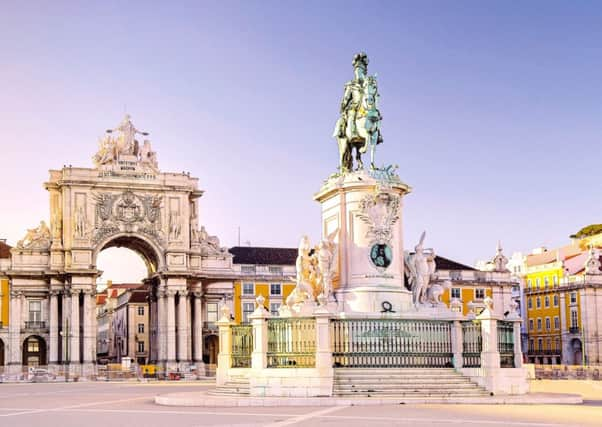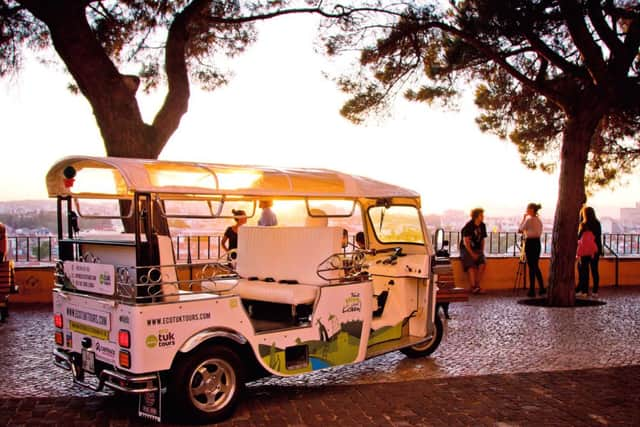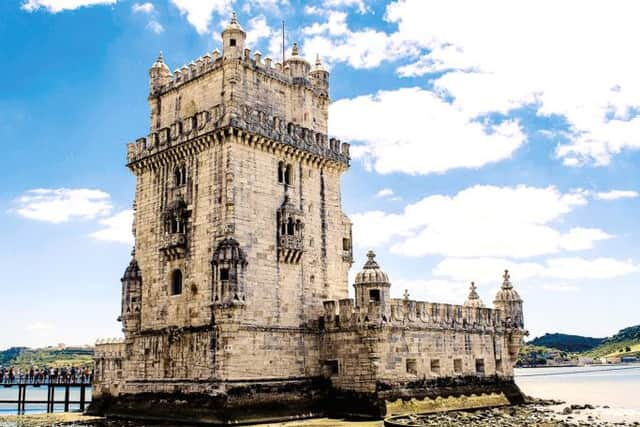Travel: Lisbon, Portugal


NATURAL beauty, fascinating history, favourable climate, friendly locals, monuments galore, cool street art, outstanding value for your euro, vibrant bars... Lisbon is a city that ticks any box you wish to add to your checklist.
A great way to equip yourself with a potted history of the Portuguese capital before starting to explore is a visit to the Lisboa Story Centre.
Advertisement
Hide AdTwo of the most significant events that have helped shape modern Lisbon are the Great Earthquake of 1755, and the 25 April Revolution of 1974, a military coup that overthrew a dictatorship without a shot being fired and paved the way for democracy.


The earthquake, followed by raging fires and a tsunami, rained terror on Lisbon’s inhabitants on All Saints’ Day 260 years ago, and although it brought the city to its knees, it also generated a powerful reaction of positivity to rebuild Lisbon and unite the people.
The Lisboa Story Centre is tucked away in Comercio Square or Praca do Comercio, a waterfront beauty spot that has views of the Augusta Street Triumphal Arch in one direction and the Tagus River in the other, framed by the formidable 25 April Bridge – a twin of San Francisco’s Golden Gate version and Scotland’s own Forth Road Bridge. Another familiar figure looks over to the city from across the river – the Monument to Christ, which can be reached by ferry and was inspired by the statue in Rio de Janeiro.
Lisbon is a melting pot of many foreign influences, with a rich historic tapestry dominated by royals, Romans, Visigoths and Moors. All of the rulers used the city’s castle as a seat of power, and while it took an almighty battering from the earthquake and various violent episodes, it is now a place of wonderful serenity. It takes the name of St George now, doffing a cap to the fruitful relations the city has long enjoyed with England and its British cousins.
Our mode of transport to view the castle and the maze of quaint streets that lead there was a speedy electric tuk tuk. The famous No 28 tram (more of which later) will also take you up to the castle.


Our guides Fernando and Hugo were fonts of knowledge – pretty nifty drivers too – and the pride and passion they took in their city and its colourful tales enhanced the experience.
Advertisement
Hide AdThe view from the castle’s ramparts does not disappoint. You can only marvel at the beauty stretched out below – row upon row of pretty pastel coloured roofs. Unspoilt Iberian beauty. And on the subject of beauty, look out for the castle’s resident peacocks. The sight of one had us all scurrying for cameras to capture the moment, only to quickly discover there are umpteen of these birds and picture opportunities can be grabbed at leisure.
After scrambling back on board our “eco tuk”, we stopped off at the cathedral, the Miradouro Das Portas do Sol viewpoint, gazing over medieval Lisbon, and then on to the twice-weekly flea market. No aggressive salesmanship here, instead a relaxed vibe and just about everything and anything on show. I did swither over a framed picture of the great footballer Eusebio, but I didn’t want to offend our hosts on the trip from Turismo de Lisboa – Carmo and Joao – who were both avid fans of Benfica’s great rivals, Sporting.
Advertisement
Hide AdBack in town we had time to stroll through Baixa, the city’s downtown, and the trendy Chiado district. The bars we visited were welcoming, but for a true Lisbon experience try a shot of ginjinha, a sweet and punchy cherry liqueur. The queue stretching out of a shop that has served the city for more than a century shows the popularity of this exotic nip.
Food and drink here are affordable for a European capital and the meals we enjoyed were of the highest standard. The cool Ministerium, off Praco do Comercio, is worth checking out, as is Deutos da Se for a more traditional sit-down meal, and the innovative Mercado de Campo de Ourique – a trendy indoor market that allows you to select your meal from stalls catering for all tastes. If you’re a fan of salted cod (bacalhau), you’re in luck, as the people of Portugal swear by it and legend has it that there are 365 recipes to try.
The most memorable meal we had was clinched by the entertainment that accompanied it. Fado, the traditional music of Portugal, is hauntingly melancholic, and it was a real privilege to see the male and female vocalist and guitarists perform with such gusto in the intimate setting of a Fado House, in this case the cosy Maria da Mouraria.
A city’s history is usually the No 1 fascination for me, but Lisbon literally added a whole new dimension in 1998 when the Expo came to town. An industrial area to the east of the city was given a makeover and the centrepiece of this futuristic Parque das Nacoes district is the Oceanario de Lisboa, one of the largest aquariums in Europe and home to 25,000 sharks, fish and birds, split into four oceans and full of educational pointers and conservation tips.
Lisbon had so much to offer I couldn’t possibly see it all in one trip. But I did, thankfully, get to bag two tourists “musts” in my three-day trip.
The first was an unforgettable journey on the No 28 tram which takes in many of Lisbon’s most famous districts, and for less than ¤3. It was a thrilling timewarp, as these trams are faithfully the same inside and out as they were a century ago.
Advertisement
Hide AdThe second “must” was a visit to the Belem Tower and Jeronimos Monastery, a World Heritage site, surrounded by parks, which takes you back to Portugal’s golden age of explorers. This is handily located for a visit to the Museum of Modern Art, and the Discoveries Monument, built in 1960 to honour the 500th anniversary of Henry the Navigator’s death.
Next to the monastery is Antiga Confeitaria de Belem – Portugal’s most famous cafe, selling the renowned Pasteis de Belem. The recipe is secret, but these flaky vanilla cream pastries are recognised as unbeatable. Don’t be put off by the queues, you are quickly seated and fed this delectable treat.
Advertisement
Hide AdVisiting Lisbon was a treat too – never have I been so taken with a first visit to a European city.
Fly to Lisbon with TAP Portugal (www.flytap.com) from Manchester or London. I flew from Edinburgh to Manchester with flybe. TAP operates year-round flights to Lisbon from London Heathrow, London Gatwick and Manchester with fares, including taxes, starting from £62.98 pp return.
• Accommodation at Turim Hotel, www.turim-hotels.com – double rooms with breakfast start from €150/£114 per night.
•More information at www.visitlisboa.com;
www.pasteisdebelem.pt. Fado dinner and performance at www.mariadamouraria.pt